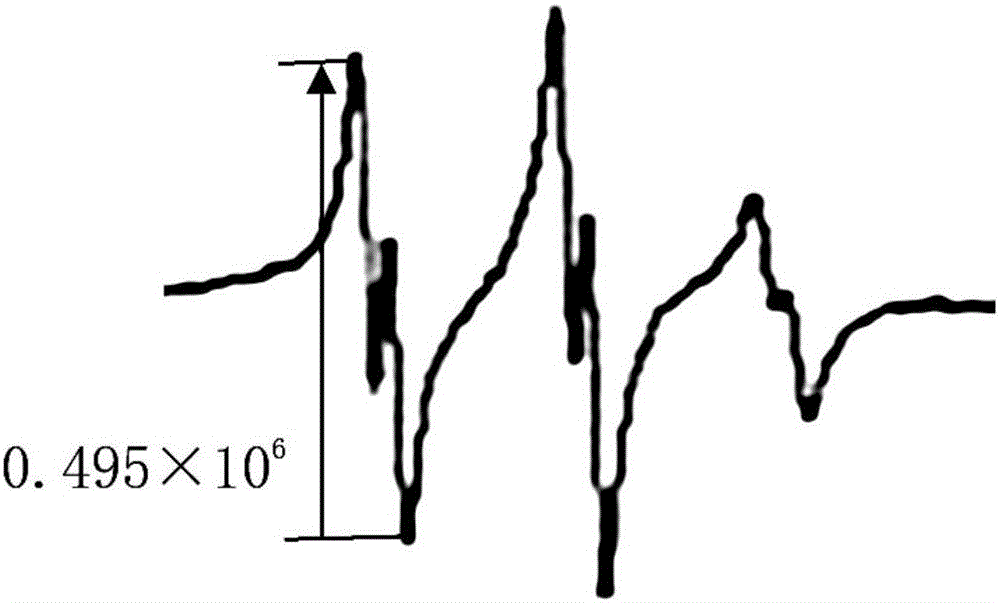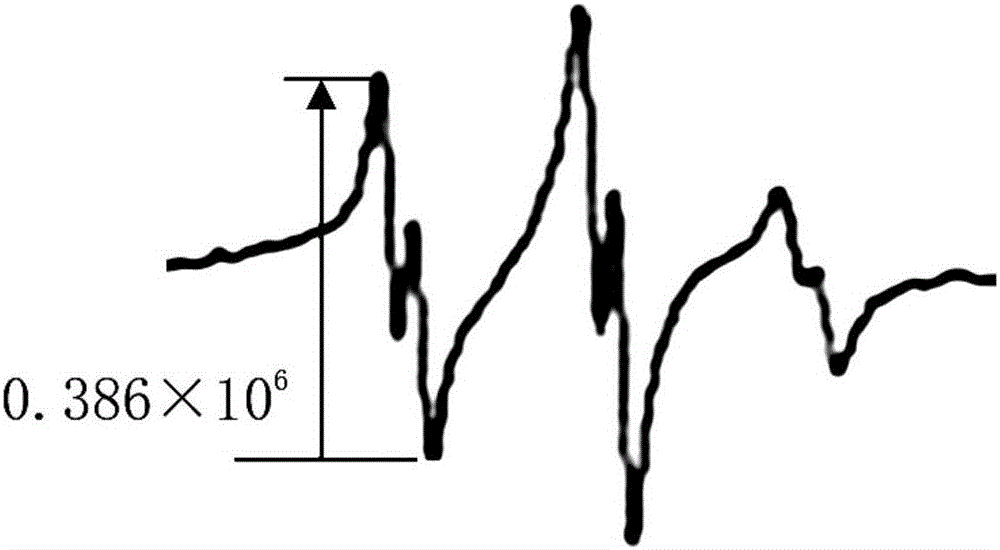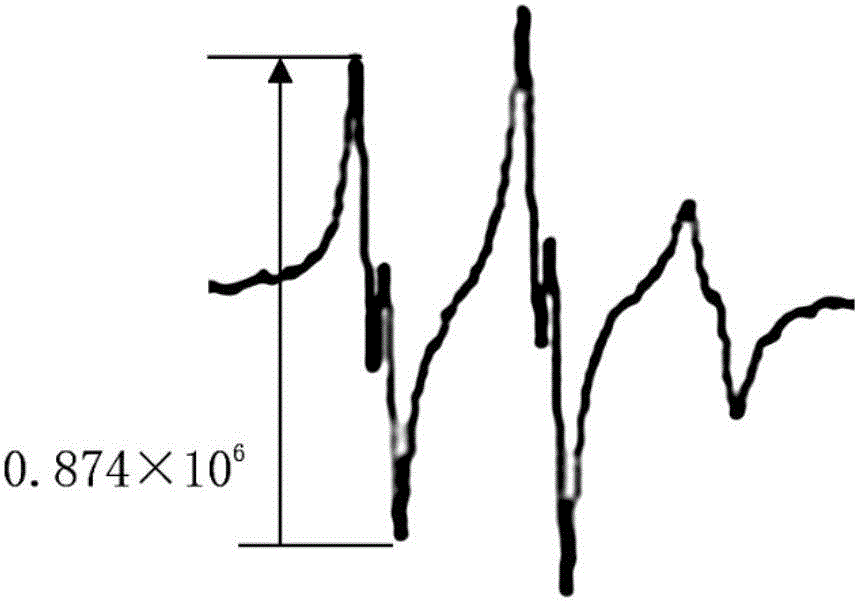Method for rapidly detecting lipid oxidation in refrigeration process of meat
A technology for lipid oxidation and meat products, which is applied in the direction of using electron paramagnetic resonance for analysis, etc., can solve the problems of influence of by-product detection results, large influence of sample color, long detection time, etc., and achieves short time consumption and low cost. , the effect of reducing work intensity
- Summary
- Abstract
- Description
- Claims
- Application Information
AI Technical Summary
Problems solved by technology
Method used
Image
Examples
Embodiment 1
[0044] Take 0.5g of beef refrigerated for 3 days;
[0045]Add 1ml, 80mM POBN (a-(4-pyridyl-1-oxygen)-N-tert-butylnitroketone) solution to the meat and incubate for 20min;
[0046] Add 8ml of chloroform methanol mixed solution to the above system, the volume ratio is 1:1 and 6ml of deionized water;
[0047] Homogenize the above system;
[0048] Add 15ml of chloroform-methanol mixed solution to the above system again, the volume ratio of the two is 1:1;
[0049] Shake the above system on a vortex shaker for 2 minutes;
[0050] Then centrifuge the above system for 8min with 500g centrifugal force;
[0051] The chloroform layer was separated from the system with a separatory funnel:
[0052] Collect the chloroform solution through a sodium sulfate column;
[0053] Collect the above-mentioned chloroform solution after passing through the column and remove chloroform by rotary evaporation, and the rotary evaporation temperature is 50°C;
[0054] Collect the above-mentioned sam...
Embodiment 2
[0058] Take 1g of beef refrigerated for 5 days;
[0059] Add 1.5ml, 70mM POBN solution to the meat and incubate for 40min;
[0060] Add 6ml chloroform methanol mixed solution to the above system, the volume ratio is 4:1 and 5ml deionized water;
[0061] Homogenize the above system;
[0062] Add 18ml of chloroform-methanol mixed solution to the above system again, the volume ratio of the two is 4:1;
[0063] Oscillate the above system on a vortex shaker for 2.5 minutes;
[0064] Then centrifuge the above system for 10min with 800g centrifugal force;
[0065] The chloroform layer was separated from the system with a separatory funnel:
[0066] Collect the chloroform solution through a sodium sulfate column;
[0067] Collect the above-mentioned chloroform solution after passing through the column and remove chloroform by rotary evaporation, and the rotary evaporation temperature is 55 °C;
[0068] Collect the above-mentioned samples after rotary evaporation, and put them in...
Embodiment 3
[0071] Take 1g of pork that has been refrigerated for 5 days;
[0072] Add 2ml, 50mM POBN solution to the meat and incubate for 30min;
[0073] Add 10ml chloroform methanol mixed solution to the above system, the volume ratio is 3:1 and 4ml deionized water;
[0074] Homogenize the above system;
[0075] Add 30ml of chloroform-methanol mixed solution to the above system again, the volume ratio of the two is 3:1;
[0076] Shake the above system on a vortex shaker for 3 minutes;
[0077] Then centrifuge the above system for 15min with 800g centrifugal force;
[0078] The chloroform layer was separated from the system with a separatory funnel:
[0079] Collect the chloroform solution through a sodium sulfate column;
[0080] Collect the above-mentioned chloroform solution after passing through the column and remove chloroform by rotary evaporation, and the rotary evaporation temperature is 45°C;
[0081] Collect the above-mentioned samples after rotary evaporation, and put t...
PUM
 Login to View More
Login to View More Abstract
Description
Claims
Application Information
 Login to View More
Login to View More - R&D
- Intellectual Property
- Life Sciences
- Materials
- Tech Scout
- Unparalleled Data Quality
- Higher Quality Content
- 60% Fewer Hallucinations
Browse by: Latest US Patents, China's latest patents, Technical Efficacy Thesaurus, Application Domain, Technology Topic, Popular Technical Reports.
© 2025 PatSnap. All rights reserved.Legal|Privacy policy|Modern Slavery Act Transparency Statement|Sitemap|About US| Contact US: help@patsnap.com



